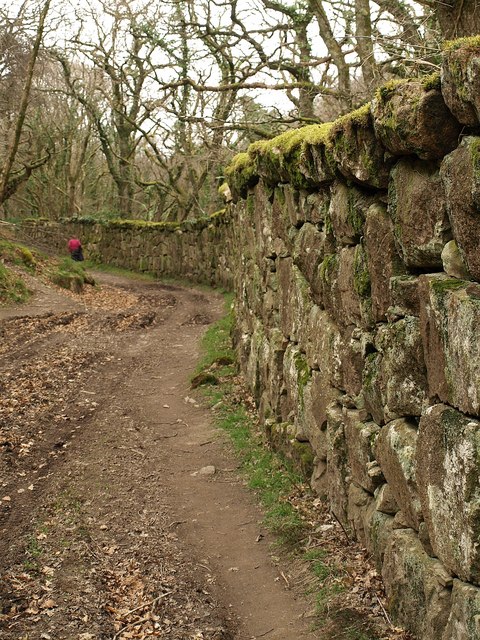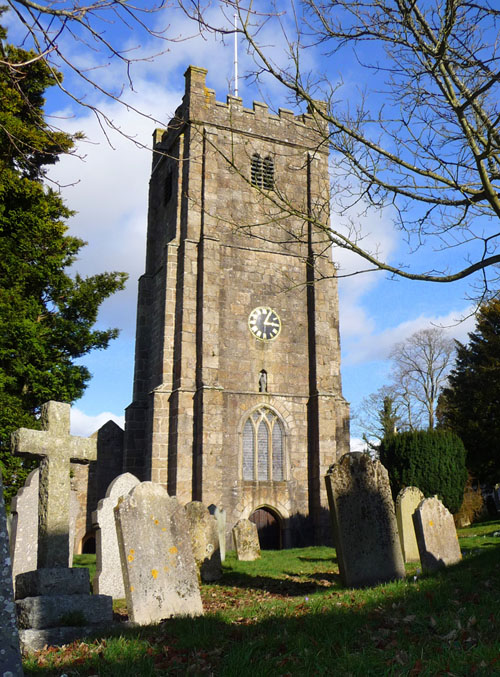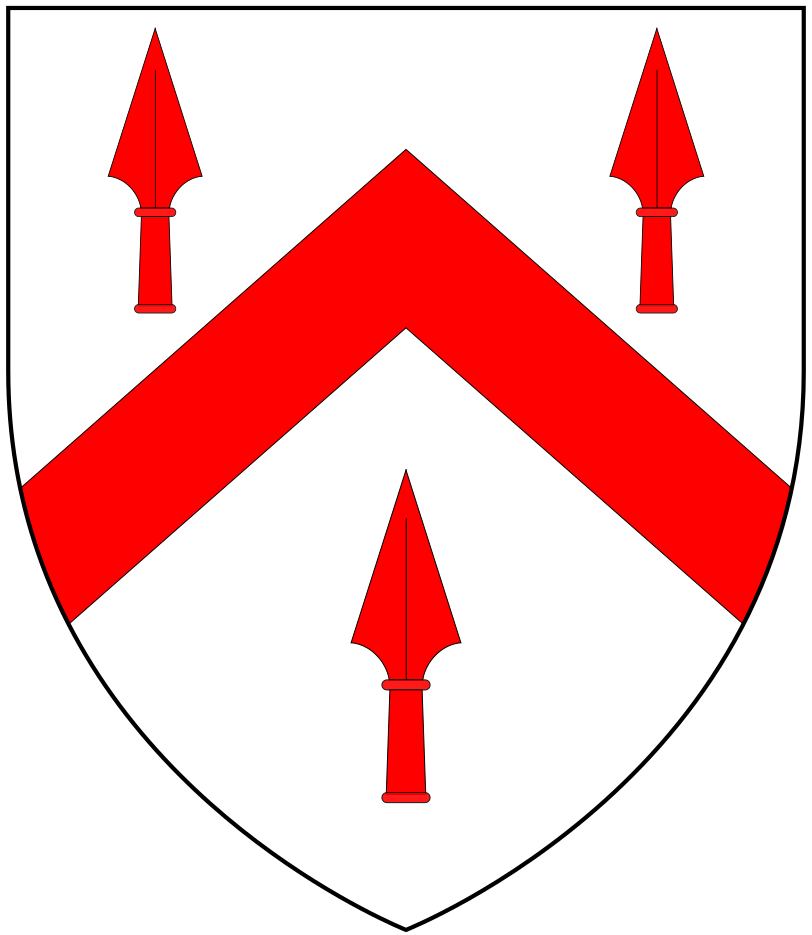|
Whiddon, Chagford
Whiddon is an historic estate in the parish of Chagford in Devon, England. The manor house, now known as Whiddon Park House, survives as a remnant of the larger 16th-century mansion house of the Whiddon family.Cherry & Pevsner, p. 251. The house displays the date 1649 inscribed above the inner doorway. The manor house is now the property of the National Trust and is let for a nominal rent, but on a full repairing and insuring lease expiring on 17 January 2079. The deer park, which is bounded by a wall built of massive granite blocks at the entrance to the Teign Gorge, was built by Sir John Whiddon (died 1576), a Justice of the King's Bench. His monument survives in St Michael's Church, Chagford.Cherry & Pevsner, p. 250. References ;Sources * Cherry, Bridget & Pevsner, Nikolaus Sir Nikolaus Bernhard Leon Pevsner (30 January 1902 – 18 August 1983) was a German-British art historian and architectural historian best known for his monumental 46-volume series of ... [...More Info...] [...Related Items...] OR: [Wikipedia] [Google] [Baidu] |
Wall Of Whiddon Deer Park - Geograph
A wall is a structure and a surface that defines an area; carries a load; provides security, shelter, or soundproofing; or, is decorative. There are many kinds of walls, including: * Walls in buildings that form a fundamental part of the superstructure or separate interior rooms, sometimes for fire safety *Glass walls (a wall in which the primary structure is made of glass; does not include openings within walls that have glass coverings: these are windows) * Border barriers between countries * Brick walls * Defensive walls in fortifications * Permanent, solid fences * Retaining walls, which hold back dirt, stone, water, or noise sound * Stone walls * Walls that protect from oceans (seawalls) or rivers (levees) Etymology The term ''wall'' comes from Latin ''vallum'' meaning "...an earthen wall or rampart set with palisades, a row or line of stakes, a wall, a rampart, fortification..." while the Latin word ''murus'' means a defensive stone wall. English uses the same word to ... [...More Info...] [...Related Items...] OR: [Wikipedia] [Google] [Baidu] |
Chagford
Chagford is a market town and civil parish on the north-east edge of Dartmoor, in Devon, England, close to the River Teign and the A382, 4 miles (6 km) west of Moretonhampstead. The name is derived from ''chag'', meaning gorse or broom, and the ''ford'' suffix indicates its importance as a crossing place. At the 2011 Census, it had a population of 1,449. History Archaeological remains confirm that a community has existed here for at least 4000 years. In historical times, Chagford grew due to the wool trade and from tin mining in the area. A weekly market was held here from before 1220, and a monthly livestock market in the town survived until the 1980s. In 1305 it was made a stannary town where tin was traded. Among the most prominent tin-mining families in the 16th century were the Endecotts, Knapmans, Whiddons and Lethbridges. In an English Civil War skirmish Sidney Godolphin, the poet and Royalist MP for Helston, was shot and killed in the porch of the Three Crowns. In ... [...More Info...] [...Related Items...] OR: [Wikipedia] [Google] [Baidu] |
Devon
Devon ( , historically known as Devonshire , ) is a ceremonial and non-metropolitan county in South West England. The most populous settlement in Devon is the city of Plymouth, followed by Devon's county town, the city of Exeter. Devon is a coastal county with cliffs and sandy beaches. Home to the largest open space in southern England, Dartmoor (), the county is predominately rural and has a relatively low population density for an English county. The county is bordered by Somerset to the north east, Dorset to the east, and Cornwall to the west. The county is split into the non-metropolitan districts of East Devon, Mid Devon, North Devon, South Hams, Teignbridge, Torridge, West Devon, Exeter, and the unitary authority areas of Plymouth, and Torbay. Combined as a ceremonial county, Devon's area is and its population is about 1.2 million. Devon derives its name from Dumnonia (the shift from ''m'' to ''v'' is a typical Celtic consonant shift). During the Briti ... [...More Info...] [...Related Items...] OR: [Wikipedia] [Google] [Baidu] |
Manor House
A manor house was historically the main residence of the lord of the manor. The house formed the administrative centre of a manor in the European feudal system; within its great hall were held the lord's manorial courts, communal meals with manorial tenants and great banquets. The term is today loosely applied to various country houses, frequently dating from the Late Middle Ages, which formerly housed the landed gentry. Manor houses were sometimes fortified, albeit not as fortified as castles, and were intended more for show than for defencibility. They existed in most European countries where feudalism was present. Function The lord of the manor may have held several properties within a county or, for example in the case of a feudal baron, spread across a kingdom, which he occupied only on occasional visits. Even so, the business of the manor was directed and controlled by regular manorial courts, which appointed manorial officials such as the bailiff, granted ... [...More Info...] [...Related Items...] OR: [Wikipedia] [Google] [Baidu] |
National Trust
The National Trust, formally the National Trust for Places of Historic Interest or Natural Beauty, is a charity and membership organisation for heritage conservation in England, Wales and Northern Ireland. In Scotland, there is a separate and independent National Trust for Scotland. The Trust was founded in 1895 by Octavia Hill, Sir Robert Hunter and Hardwicke Rawnsley to "promote the permanent preservation for the benefit of the Nation of lands and tenements (including buildings) of beauty or historic interest". It was given statutory powers, starting with the National Trust Act 1907. Historically, the Trust acquired land by gift and sometimes by public subscription and appeal, but after World War II the loss of country houses resulted in many such properties being acquired either by gift from the former owners or through the National Land Fund. Country houses and estates still make up a significant part of its holdings, but it is also known for its protection of wild lands ... [...More Info...] [...Related Items...] OR: [Wikipedia] [Google] [Baidu] |
Deer Park (England)
In medieval and Early Modern England, Wales and Ireland, a deer park () was an enclosed area containing deer. It was bounded by a ditch and bank with a wooden park pale on top of the bank, or by a stone or brick wall. The ditch was on the inside increasing the effective height. Some parks had deer " leaps", where there was an external ramp and the inner ditch was constructed on a grander scale, thus allowing deer to enter the park but preventing them from leaving. History Some deer parks were established in the Anglo-Saxon era and are mentioned in Anglo-Saxon Charters; these were often called ''hays'' (from Old English ''heġe'' (“hedge, fence”) and ''ġehæġ'' (“an enclosed piece of land”). After the Norman conquest of England in 1066 William the Conqueror seized existing game reserves. Deer parks flourished and proliferated under the Normans, forming a forerunner of the deer parks that became popular among England's landed gentry. The Domesday Book of 1086 record ... [...More Info...] [...Related Items...] OR: [Wikipedia] [Google] [Baidu] |
Granite
Granite () is a coarse-grained (phaneritic) intrusive igneous rock composed mostly of quartz, alkali feldspar, and plagioclase. It forms from magma with a high content of silica and alkali metal oxides that slowly cools and solidifies underground. It is common in the continental crust of Earth, where it is found in igneous intrusions. These range in size from dikes only a few centimeters across to batholiths exposed over hundreds of square kilometers. Granite is typical of a larger family of ''granitic rocks'', or ''granitoids'', that are composed mostly of coarse-grained quartz and feldspars in varying proportions. These rocks are classified by the relative percentages of quartz, alkali feldspar, and plagioclase (the QAPF classification), with true granite representing granitic rocks rich in quartz and alkali feldspar. Most granitic rocks also contain mica or amphibole minerals, though a few (known as leucogranites) contain almost no dark minerals. Granite is nearly alway ... [...More Info...] [...Related Items...] OR: [Wikipedia] [Google] [Baidu] |
Teign Gorge
Teigne (also : Teign, Tègne, Teeñ, Tin or Tañ in Wolof language) was the title of the monarch of the pre-colonial Kingdom of Baol, now part of present-day Senegal. In Wolof, "Teigne" means the support that is placed on the head to carry something heavy, a bucket of water for example, in this case, it means the Sovereign or king carries a heavy responsibility. The origin of the title "Teigne" could also come from the royal Wolof title of "Tagne" which means an individual who belongs to a royal matrilineal lineage without belonging to the ruling patrilineal lineage and this was the case with the first "Teigne" of Baol, the Wolof Demba Gueye, who belonged to the royal matrilineal lineage of the Jolof empire but did not belong to the patrilineal ruling clan of Jolof. The first Lamans of Baol were Mandingos, the Socé, from the first Laman of Baol "Xaya Manga" to the 13th and last Laman "Ñasa Maroon". After the "Laman" Socé, the Teigne began with the Wolof Demba Gueye as the 14t ... [...More Info...] [...Related Items...] OR: [Wikipedia] [Google] [Baidu] |
John Whiddon
Sir John Whiddon (died 27 January 1576) of Whiddon in the parish of Chagford in Devon, was a Justice of the Queen's Bench from 4 October 1553 to his death on 27 January 1576, during the reigns of Queen Mary I and Queen Elizabeth I. Personal life He was the son of John Whiddon of Chagford by his wife who was a member of the Rugg family of Chagford. His ancestors were resident in the parish of Chagford for at least six generations prior to the judge. Whiddon married twice. His first wife was Ann Hollis, daughter of Sir William Hollis, by whom he had a daughter, Joane, who married John Ashley of London. His second marriage was to Elizabeth Shilston, a daughter and co-heiress of William Shilston. Among their eleven children were William, his eldest son and heir apparent, who predeceased his father without children, having married Eleanor Basset, a daughter of John Basset (1518–1541), and Francis (died 1606), fourth son, whose granddaughter was the legendary Mary Whiddon. Their ... [...More Info...] [...Related Items...] OR: [Wikipedia] [Google] [Baidu] |
Justice Of The King's Bench
Justice of the King's Bench, or Justice of the Queen's Bench during the reign of a female monarch, was a puisne judicial position within the Court of King's Bench, under the Chief Justice. The King's Bench was a court of common law which modern academics argue was founded independently in 1234, having previously been part of the '' curia regis''. The court became a key part of the Westminster courts, along with the Exchequer of Pleas (qualified to hear cases involving revenue owed to the King) and the Court of Common Pleas (qualified to hear cases between subject and subject); the latter was deliberately stripped of its jurisdiction by the King's Bench and Exchequer, through the Bill of Middlesex and Writ of Quominus respectively. As a result, the courts jockeyed for power. In 1828 Henry Brougham, a Member of Parliament, complained in Parliament that as long as there were three courts unevenness was inevitable, saying that "It is not in the power of the courts, even if all were ... [...More Info...] [...Related Items...] OR: [Wikipedia] [Google] [Baidu] |
Bridget Cherry
Bridget Cherry OBE, FSA, Hon. FRIBA (born 17 May 1941) is a British architectural historian who was series editor of the Pevsner Architectural Guides from 1971 until 2002, and is the author or co-author of several volumes in the series.CHERRY, Bridget Katherine ''Who's Who 2015'', A & C Black, 2015; online edn, Oxford University Press, 2014 Family and education Cherry is the elder sister of the Henry Marsh. She studied history at |






